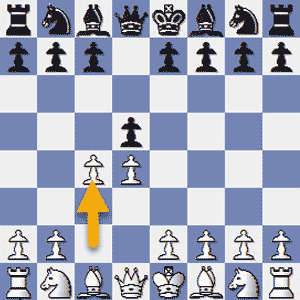Encyclopedia Of Chess Openings

The Encyclopedia Of Chess Openings will help you build an openings repertoire that will make your opponents tremble. This will be a major plank in your overall chess strategy.
The ECO Index was compiled in the 1960s. The Index is split into five separate volumes covering five different categories of openings.
Volume A contains all irregular openings and flank openings. Volume B covers Black's replies to 1. e4, mainly the Caro-Kann and the Sicilian.
Volume A contains all irregular openings and flank openings. Volume B covers Black's replies to 1. e4, mainly the Caro-Kann and the Sicilian.
Volume C looks at the semi-open game with the French Defense and the open game with the Ruy Lopez Opening. Volume D does likewise with the closed game including the Grunfeld systems. Finally Volume E is a study of Indian systems.
Build an openings repertoire that will make your opponents tremble
Encyclopedia of Chess Openings - Volume A
































































1. a3 e5 2. h3 d5 - Anderssen's Creepy Crawly Formation
Volume A of the Encyclopedia of Chess Openings is dedicated to openings that don't begin with 1.e4 or 1.d4. Those openings that don't involve the immediate movement of the central pawns, but the outer pawns on files a,b,c,f,g and h.
A00 is for the Irregular Openings alone and there are quite a few. Among these are the Anderssen's Opening Variations, the Ware Opening Variations, the Sokolsky Opening Variations and others.
A01-39 covers Flank Openings such as Larsen's Opening, the Bird's Opening Variations, the Reti Opening Variations and the English Opening Variations.
A01-39 covers Flank Openings such as Larsen's Opening, the Bird's Opening Variations, the Reti Opening Variations and the English Opening Variations.
A40-99 deals with the Queen's Pawn Game, Queen's Indian, King's Indian, Old Indian Defense Variations, the Benoni Defense Variations, the Benko Gambit Variations and the Dutch Defense Variations.
Different Slants on 1.e4 in Volume B
































































Caro-Kann, Two Knights Variation - 1 e4 c6 2 Nc3 d5 3 Nf3 Bg4
Volume B of the Encyclopedia of Chess Openings deals with responses to 1.e4 excluding 1... e5, d5, Nf6, g6, d6, c6 or c5. B00 gives us the King's Pawn Opening without 1... e5, 1... d5, 1... Nf6, 1... g6, 1... d6, 1... c6, 1... c5.
Then you have the Scandinavian Defense, the Alekhine's Defense Variations, the Robatsch (Modern) Defense and the Pirc Defense Variations bringing us up as far as B09.
B10-19 deals with the Variations of the Caro-Kann Defense and B20-99 covers the Variations of the Sicilian Defense, a real labyrinth.
Hone Your Ruy Lopez in Volume C
































































French Defense - 1.d4 d5 2.e4 e6
Volume C of the Encyclopedia of Chess Openings begins with the French Defense. C00-19 is dedicated to this opening with most of the contributions coming from Tarrasch and Winawer. Paulsen did a bit of work on this opening too and there's one in there from him also.
C20-59 consists of a varied bunch which contains but is not confined to the Center Game Variations, the Bishop's Opening Variations, the Vienna Game Variations, the King's Gambit, Petrov's Defense, the Philidor Defense, the Two Knights Defense, Three Knights Game, Four Knights Game and the Giuoco Piano Variations.
C60-99 concentrates solely on the Ruy Lopez Opening, another big family of openings.
Visit the Queen's Pawn Game in Volume D

Queen's Pawn Game: 2.c4 gives us the Queen's Gambit
Volume D of the Encyclopedia of Chess Openings is a directory for the Queen's Pawn Game, a major branch of opening chess theory. D00-06 gives us the Blackmar-Diemer Gambit, the Richter-Veresov Attack and the Torre Attack which contains the Tartakower Variation.
D07-69 covers the vast and important Queen's Gambit lines such as the Albin Countergambit Variations, the Slav Defense Variations and more in the Declined lines.
The Accepted lines are dealt with in the D20s. The rest are Declined lines. The Accepted lines feature the Alekhine Defense Variations and a few Classical Variation options. Finally D70-99 deals with the Neo-Grunfeld Defense Systems (D70-79) and the Grunfeld Defense Systems (D80-99).
Play the Indian Systems in Volume E
































































Nimzo-Indian Defense - 1 d4 Nf6 2 c4 e6 3 Nc3 Bb4
Volume E of the Encyclopedia of Chess Openings is home to the Catalan Variations and the Indian systems. E00 is the Queen's Pawn Game including the Neo-Indian Attack, the Trompowski Attack, the Catalan Opening among others. E01-09 covers the Catalan Variations. E10 is another Queen's Pawn Game opening with 3.Nf3. E11 is the Bogo-Indian Defense.
E12-E19 deals with the Queen's Indian Defense Variations. E20-59 covers all lines of the Nimzo-Indian Defense which number 39 in total. Some of these are the Three Knights Variation, the Fischer Variations and all Nimzos with 4.e3.
E60-99 is dedicated to the King's Indian Defense Variations. These include the Fianchetto Variations, the Four Pawns Attack, the Orthodox Variation and others.
Choose openings that appeal to your natural style
Moving On

Treat the Encyclopedia of Chess Openings as an opening library. Figure out which openings you want to concentrate on and you can develop an opening repertoire.
Your opening repertoire is not something you can hammer out in a week. It will accumulate and grow over the years as you mature as a chess player.
Your opening repertoire is not something you can hammer out in a week. It will accumulate and grow over the years as you mature as a chess player.
Choose openings that appeal to your natural style and how you like to play the game. They are the openings you will concentrate on. Explore the named variations within each opening.
And when you become well versed in a couple of openings? What then? The answer is simple. Play chess.

